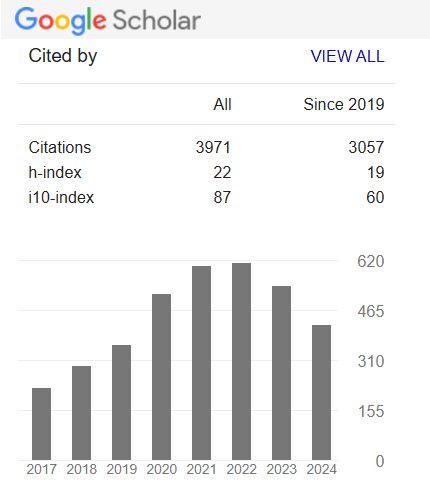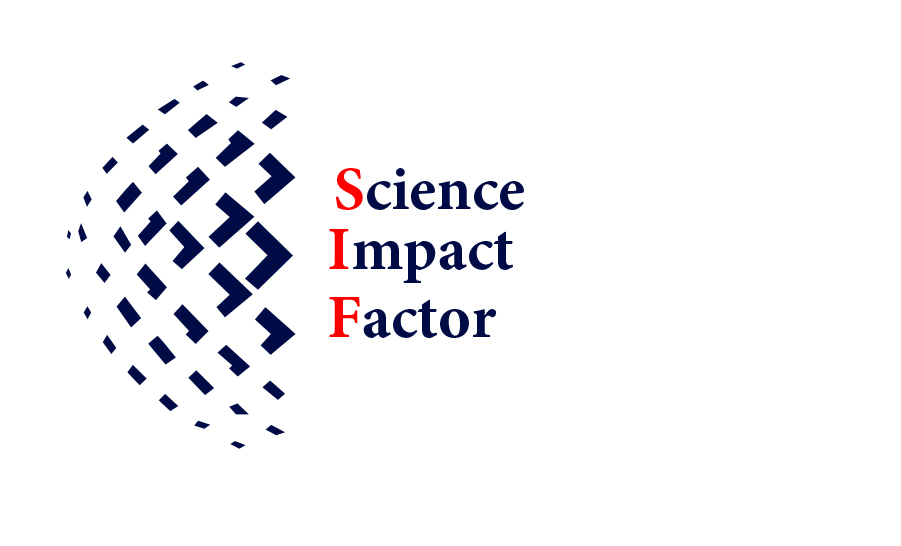How can dance be used as a therapeutic tool in treating aging diseases?
Keywords:
Dance Movement Therapy, Aging Disease, Exercise Intervention, KinesiologyAbstract
Dance involves a combination of physical activity and sensorimotor engagement and has proved to have a longstanding impact on adult neuroplasticity and mobility. In the elderly population, dance therapy can complement traditional pharmacological treatments for neurodegenerative and neurodevelopmental aging diseases such as Parkinson’s disease (PD) and Alzheimer’s disease (AD). Dance movement therapy (DMT) is closely integrated with non-specific outcomes on movement quality, interpersonal skills, cognitive capabilities, and motor outputs. This review discusses dance’s effects on aerobic capacity, physical mobility, and brain function in the elderly population. It also analyzes factors such as dance style, intensity, and duration to maximize therapeutic benefit. As a growing therapeutic tool, dance plays a pivotal role in improving quality of life and preventing disease.
Downloads
References
Abraham, A., Hart, A., Andrade, I., & Hackney, M. E. (2018). Dynamic neuro-cognitive imagery improves mental imagery ability, disease severity, and motor and cognitive functions in people with Parkinson’s Ddsease. Neural Plasticity, 2018, 1–15. https://doi.org/10.1155/2018/6168507
Ageing and health. (n.d.). Retrieved September 2, 2024, from https://www.who.int/news-room/fact-sheets/detail/ageing-and-health
Aguiar, L. P. C., da Rocha, P. A., & Morris, M. (2016). Therapeutic dancing for parkinson’s disease. International Journal of Gerontology, 10(2), 64–70. https://doi.org/10.1016/j.ijge.2016.02.002
Alzheimer’s disease fact sheet. (2023, April 5). National Institute on Aging. https://www.nia.nih.gov/health/alzheimers-and-dementia/alzheimers-disease-fact-sheet
BioRender (2020). Anatomy of the Brain. https://app.biorender.com/biorender-templates/figures/all/t-5f98224e86d2d900a3877332-anatomy-of-the-brain
Blihar, D., Delgado, E., Buryak, M., Gonzalez, M., & Waechter, R. (2020). A systematic review of the neuroanatomy of dissociative identity disorder. European Journal of Trauma & Dissociation, 4(3), 100148. https://doi.org/10.1016/j.ejtd.2020.100148
Brain anatomy and how the brain works. (2021, July 14). https://www.hopkinsmedicine.org/health/conditions-and-diseases/anatomy-of-the-brain
Chronic respiratory diseases. (n.d.). Retrieved September 2, 2024, from https://www.who.int/health-topics/chronic-respiratory-diseases
Dementia statistics. (n.d.). Alzheimer’s Disease International. https://www.alzint.org/about/dementia-facts-figures/dementia-statistics/
Fontanesi, C., Kvint, S., Frazzitta, G., Bera, R., Ferrazzoli, D., Di Rocco, A., Rebholz, H., Friedman, E., Pezzoli, G., Quartarone, A., Wang, H.-Y., & Ghilardi, M. F. (2016). Intensive rehabilitation enhances lymphocyte bdnf-trkb signaling in patients with parkinson’s disease. Neurorehabilitation and Neural Repair, 30(5), 411–418. https://doi.org/10.1177/1545968315600272
Franco, M. R., Sherrington, C., Tiedemann, A., Pereira, L. S., Perracini, M. R., Faria, C. S. G., Negrão-Filho, R. F., Pinto, R. Z., & Pastre, C. M. (2020). Effect of senior dance (DanSE) on fall risk factors in older adults: A randomized controlled Trial. Physical therapy, 100(4), 600–608. https://doi.org/10.1093/ptj/pzz187
Gras, L., Kanaan, S., McDowd, J., Colgrove, Y., Burns, J., & Pohl, P. (2015). Balance and gait of adults with very mild Alzheimer’s disease. Journal of Geriatric Physical Therapy (2001), 38(1), 1–7. https://doi.org/10.1519/JPT.0000000000000020
Hall, M. (2011). Dance/Movement therapy in inpatient hematological cancer treatment. Retrieved from https://digitalcommons.colum.edu/theses_dmt/5
Henry, G. J., Dawson, B., Lay, B. S., & Young, W. B. (2016). Relationships between reactive agility movement time and unilateral vertical, horizontal, and lateral jumps. Journal of Strength and Conditioning Research, 30(9), 2514–2521. https://doi.org/10.1519/JSC.0b013e3182a20ebc
Hincapié-Sánchez, M. F., Buriticá-Marín, E. D., & Ordoñez-Mora, L. T. (2021). Characterization of dance-based protocols used in rehabilitation—A systematic review. Heliyon, 7(12), e08573. https://doi.org/10.1016/j.heliyon.2021.e08573
Ho, R. T. H., Fong, T. C. T., Cheung, I. K. M., Yip, P. S. F., & Luk, M. (2016). Effects of a short-term dance movement therapy program on symptoms and stress in patients with breast cancer undergoing radiotherapy: A randomized, controlled, single-blind trial. Journal of Pain and Symptom Management, 51(5), 824–831. https://doi.org/10.1016/j.jpainsymman.2015.12.332
Holmes, E. B. (2023). Protest Is Mental Health: Afrocentric healing in a dance movement therapy session. IASPM Journal, 13(2), 107–111. https://doi.org/10.5429/2079-3871(2023)v13i2.7en
Huang, E. (2022). Symptoms of Parkinson's Disease. https://app.biorender.com/biorender-templates/t-62ce20f1b05a71471333493b-symptoms-of-parkinsons-disease
Kaholokula, J. K., Look, M., Mabellos, T., Zhang, G., de Silva, M., Yoshimura, S., Solatorio, C., Wills, T., Seto, T. B., & Sinclair, K. A. (2017). Cultural dance program improves hypertension management for native hawaiians and pacific islanders: A pilot randomized trial. Journal of Racial and Ethnic Health Disparities, 4(1), 35–46. https://doi.org/10.1007/s40615-015-0198-4
Kim, S. M., Kim, D. H., Yang, Y., Ha, S. W., & Han, J. H. (2018). Gait patterns in parkinson’s disease with or without cognitive impairment. Dementia and Neurocognitive Disorders, 17(2), 57–65. https://doi.org/10.12779/dnd.2018.17.2.57
Koch, S. C., Riege, R. F. F., Tisborn, K., Biondo, J., Martin, L., & Beelmann, A. (2019b). Effects of dance movement therapy and dance on health-related psychological outcomes. A Meta-Analysis update. Frontiers in Psychology, 10. https://doi.org/10.3389/fpsyg.2019.01806
Kruszyńska, E., & Poczta, J. (2020). Difficulties limiting access to sports and recreational facilities in the city in the perceptions of service users. Sports and Recreational Infrastructure Management Policy-Poznan Case Study. International journal of environmental research and public health, 17(5), 1768. https://doi.org/10.3390/ijerph17051768
Lu, B. (2003). Bdnf and activity-dependent synaptic modulation. Learning & Memory, 10(2), 86–98. https://doi.org/10.1101/lm.54603
Martin, L., Oepen, R., Bauer, K., Nottensteiner, A., Mergheim, K., Gruber, H., & Koch, S. C. (2018). Creative arts interventions for stress management and prevention—A systematic review. Behavioral Sciences, 8(2), 28. https://doi.org/10.3390/bs8020028
Meulenberg, C. J. W., Rehfeld, K., Jovanović, S., & Marusic, U. (2023). Unleashing the potential of dance: a neuroplasticity-based approach bridging from older adults to Parkinson’s disease patients. Frontiers in Aging Neuroscience, 15. https://doi.org/10.3389/fnagi.2023.1188855
Obesity and overweight. (n.d.). Retrieved September 2, 2024, from https://www.who.int/news-room/fact-sheets/detail/obesity-and-overweight
Online dance movement therapy workshops/group sessions. (n.d.). Rejoice In Motion. https://rejoiceinmotion.com/index.php/online-dance-movement-therapy-program/
Parkinson’s disease: Causes, symptoms, and treatments. (2022, April 14). National Institute on Aging. https://www.nia.nih.gov/health/parkinsons-disease/parkinsons-disease-causes-symptoms-and-treatments
Pathophysiology of Parkinson’s Disease | ATRain Education. (n.d.). https://www.atrainceu.com/content/2-pathophysiology-parkinson%E2%80%99s-disease
Philip, K. E. J., Lewis, A., Williams, S., Buttery, S. C., Polkey, M. I., Man, W., Fancourt, D., & Hopkinson, N. S. (2020). Dance for people with chronic respiratory disease: A qualitative study. BMJ Open, 10(10), e038719. https://doi.org/10.1136/bmjopen-2020-038719
Rasmussen, P., Brassard, P., Adser, H., Pedersen, M. V., Leick, L., Hart, E., . . . Pilegaard, H. (2009). Evidence for a release of brain‐derived neurotrophic factor from the brain during exercise. Experimental Physiology, 94(10), 1062–1069. https://doi.org/10.1113/expphysiol.2009.048512
Recommended pay rates for dance movement therapists. (n.d.). DTAA. https://dtaa.org.au/about/recommended-pay-rates/
Rehfeld, K., Lüders, A., Hökelmann, A., Lessmann, V., Kaufmann, J., Brigadski, T., . . . Müller, N. G. (2018). Dance training is superior to repetitive physical exercise in inducing brain plasticity in the elderly. PLoS ONE, 13(7), e0196636. https://doi.org/10.1371/journal.pone.0196636
Scott, B. M., Eisinger, R. S., Burns, M. R., Lopes, J., Okun, M. S., Gunduz, A., & Bowers, D. (2020). Co-occurrence of apathy and impulse control disorders in Parkinson disease. Neurology, 95(20), e2769–e2780. https://doi.org/10.1212/WNL.0000000000010965
T. Zaatar, M., Alhakim, K., Enayeh, M., & Tamer, R. (2023). The transformative power of music: Insights into neuroplasticity, health, and disease. Brain, Behavior, & Immunity - Health, 35, 100716. https://doi.org/10.1016/j.bbih.2023.100716
Vancea, F. (2020). Unifying personal development through dance and movement and increasing the level of bodily intelligence. Journal of Education in Black Sea Region, 6(1), 52–61. https://doi.org/10.31578/jebs.v6i1.219
Weiss, H. D., & Marsh, L. (2012). Impulse control disorders and compulsive behaviors associated with dopaminergic therapies in Parkinson disease. Neurology. Clinical practice, 2(4), 267–274. https://doi.org/10.1212/CPJ.0b013e318278be9b
What happens to the brain in alzheimer’s disease? (2024, January 19). National Institute on Aging. https://www.nia.nih.gov/health/alzheimers-causes-and-risk-factors/what-happens-brain-alzheimers-disease.
Downloads
Published
How to Cite
Issue
Section
License
Copyright (c) 2021 Amanda Lai

This work is licensed under a Creative Commons Attribution-NonCommercial-NoDerivatives 4.0 International License.
Open Access This article is licensed under a Creative Commons Attribution 4.0 International License, which permits use, sharing, adaptation, distribution and reproduction in any medium or format, as long as you give appropriate credit to the original author(s) and the source, provide a link to the Creative Commons license, and indicate if changes were made. The images or other third party material in this article are included in the article’s Creative Commons license unless indicated otherwise in a credit line to the material. If the material is not included in the article’s Creative Commons license and your intended use is not permitted by statutory regulation or exceeds the permitted use, you will need to obtain permission directly from the copyright holder. To view a copy of this license, visit http://creativecommons.org/ licenses/by/4.0/










